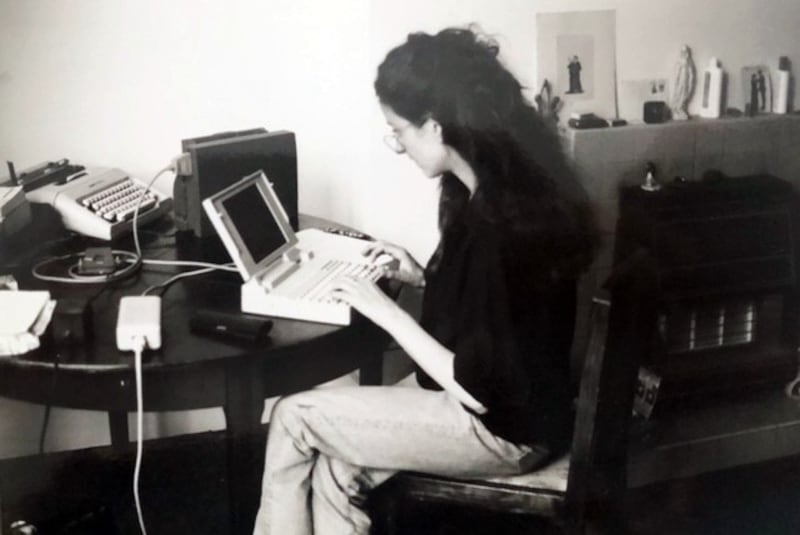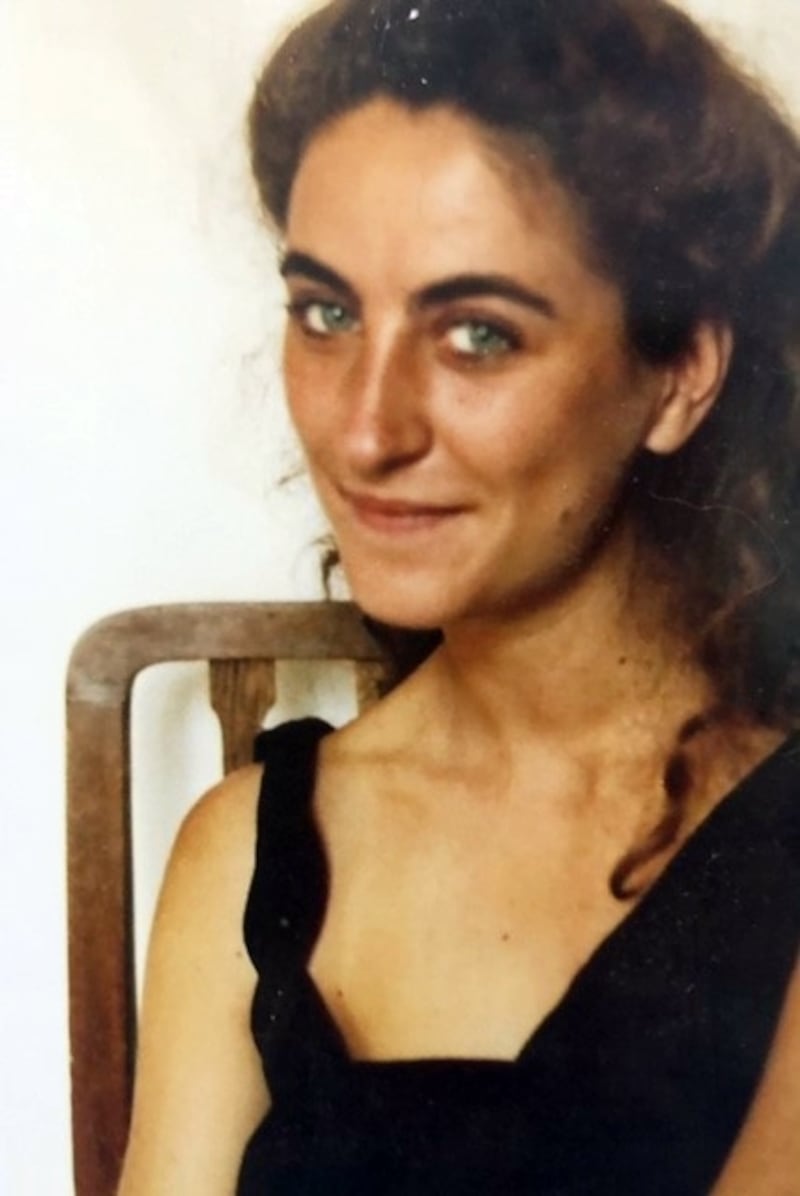Here Comes John (1993), Bridget O’Connor’s first book of stories, blew in like a high wind in 1993 – smart, stylish, very funny, even a little cruel sometimes, giving it more than a whiff of danger. Her voice was unforgettable, its ear close to the ground of the contemporary demotic, a rare working-class voice as rebellious as John Lydon. Urgency prevailed from the very beginning, one only has to look at the contents of Here Comes John to see that time was major for O’Connor – Kissing Time, Time in Lieu, I’m Running Late, Time to Go. The last story in her second and final volume, Tell Her You Love Her (1997), was titled Closing Time.
Bridget was a friend. We met when we both lived in Dalston at the turn of the last century so it was hard to read these titles again after her death from breast cancer in 2010. A page fell open and the words at the top read, “Cancer, Oh no, fuck, fuck, fuck.” It was unbearable, I put the stories away. But they stayed in my mind anyway. Good short stories are highly memorable. Like poems, they are short enough, concentrated enough to hold in one’s mind. One tends to remember proportionately more detail from a story because every word counts. And counting was an important part of Bridget’s art.

I like to think that Bridget wasn’t just predicting her own death – although she seems to have had a sense that her time on the planet wasn’t long – but also expressing the many ways in which time impacts on a short story writer. Writing stories is a highly exacting art, and timing is crucial. Like a pop song, one has to get in and out fast: a short story needs to be contemplating its demise from the beginning, as here in the opening line of Bridget’s magnificent Kissing Time, the first story in Here Comes John, “She said when she could, ‘How long have I got?’ ” The unnamed character is lying back in the dentist’s chair; she’s going to lose her teeth:
The dentist was young, he had alopecia (now that wasn’t fair, was it?), head like a kid’s fight, the damage combed over, his fingers in latex, the smell of new dollies. A hosepipe, the smell of something a long time rotting. She lay back, cried … The noise was tremendous: spluttering scraping. Needles. Needles of light. The dentist was yelling, “Quite frankly, young lady, never never never in my life … ”
O'Connor wrote directly out of her time and place, 1990s London, and like all short story writers on a tight word budget, she evoked so much with a modest handful of words.
Precise, almost unbearably physical and perfectly timed. Like a pop song, too, it has its refrain: “Twenty-five years old. Down to the bone … No one would kiss her … No one would kiss her with false teeth … She was twenty five, only twenty five … She was only twenty-five. She hadn’t kissed properly yet.”
O’Connor wrote directly out of her time and place, 1990s London, and like all short story writers on a tight word budget, she evoked so much with a modest handful of words.
Bare chests burned in the road. Diggers dug over yellow pipes and tubes, machines spun. A tiny red radio blared, not tuned in, a crackling disturbance in the air. She stamped up the pavement. She smelt toffee-apple tarmac and tea stewing in a little toothpaste-coloured hut. “Cheer up, my darling,” a big one said. She chose him. She walked up to him, so close his smile slipped. “Come on then,” she said. “Come on then. Kiss.”
Can love last?
Kissing was to remain as much of a constant as time in O’Connor’s stories – on the last page of Closing Time, the final story of her second collection, the ghostly character Harry recalls, “a tall man and a taller woman in no more than rags, long dead, still in a lipless kiss”. Kissing and time – sex and death. Can love last? O’Connor’s characters are dementedly obsessed with this question.
There isn’t a scrap of surplus in her distilled prose. But what does a short story writer do when she’s barely finished her first book of stories and she’s expected to “get on with the novel”? Novels are all about the numbers, not just the number of words but sales. Time is money and novels require time and space to write. It’s worse than the biological clock. And what if the form doesn’t suit you?
Bridget and I spoke a lot about this. We were happier in the shorter forms – poems for me, stories for Bridget. But my agent’s mantra was “Press on!” To say that I felt harried is putting it mildly. I think Bridget felt the same, even if she did describe herself as “bone idle”. “Press on!” I would say to make us laugh.
The most striking thing for me now, re-reading these stories after more than a decade, is that she is before her time. She's really speaking out, rape culture dissected before it even had a name
Later on, the poetry of Bridget’s dialogue along with her exquisite timing found another home in her prize-winning screenplays and plays. Towards the end of her life, Bridget worked with her husband, the director and writer Peter Straughan, on several projects. They adapted John le Carré’s novel Tinker Tailor Soldier Spy into a 2011 film of the same name, for which they were awarded the Bafta Award for best adapted screenplay. The screenplay was nominated for several other awards, including the Academy Award for best adapted screenplay in 2012.


But the most striking thing for me now, re-reading these stories after more than a decade, is the fact that she is before her time. She’s really speaking out, rape culture dissected before it even had a name:
I was on my way to meet a gaggle of girls in Dalston, walking, I see now like a Crime Watch Reconstruction, in clickety-click heels. I was robbed outside a cash machine, tilted in high heels, dressed for no reason as a trollop, asking the mirror before I came out, How stupid do I look? Answer from the bleeps of the cash machine: extremely-thick-indeed girl … The Gangster had a knife, the shaft pointing up his sleeve. At least, I think he had a knife. The more I replay this scene though, the more the knife thickens to broadsword, thins to pencil-wide. Could I have been robbed by – a pencil?
(Hard Times)
The speaker, unnamed like so many of O’Connor’s speakers, goes on to realise: “I was victimised. I am a Victim. And once you’re a Victim, the Wankers are everywhere.” When Bridget speaks of Wankers, she’s not speaking figuratively. And they really are everywhere; “He’s polishing, he’s – working at a shine. He’s … It’s … oh my Jesus, it’s lacquered up like a colonel’s stick. ‘You wanker!’ I yell … I look at my watch outraged, ‘It’s only bloody nine-thirty in the morning. I haven’t had my breakfast yet … A dumpy man in a granite shadow turned ready to spurt, wearing the Wanker’s look of worried pride, his dick in his hand like a thick brown arrow … Sometimes they are supine. They come at you from the ground. Watch that ground.”
Bridget had a fine line in disgust; her stories are packed with the poetry of disgust.
The ATM incident
I think of her every time I pass the Irish pub where Bridget once saw two nuns pulling pints behind the counter. She assured me they were not in fancy dress but family members helping out in an emergency. And they are as real in my imagination now as the Joycean barmaids in Ulysses, even though I never saw them and I’m still not sure Bridget wasn’t pulling my leg. I think of her when I pass the Santander cash machine on Kingsland High Street where she was mugged – it was Abbey National then. What a web she wove out of that incident and with what precision.
Like her lovable, glamorous secretary from Enquiries (General), she was deceptive. Underneath the insouciant lip and bravado of her London working-class women lies an intense visual attention, a fine imaginative knowledge of nature: “She poked with her trowel but succeeded only in annoying a pair of beetle lovers (who had just that moment squeezed off their tight brown helmets for an earthy shag and now had to get the damn things back on again.)” Even Bridget’s kissing beetles are worried about wasting time.

In a 2007 Irish Times interview with Martin Doyle, Bridget spoke of the cancer diagnosis, which came during her pregnancy:
“God, I’d better do some work, not sit round watching breakfast television any more. I felt a kind of electricity – the day is not as long as I thought it was. Also, being a mother for the first time, I definitely want to be around.
I think Bridget was too hard on herself. I imagine that she learned about those beetles and many other things from “the box” because true writers are always collecting when they’re not writing and everything goes into the mix. She was listening, too, highly tuned to the music of the demotic. These fascinations made their way into the stories and later her plays and screenplays. And when she walked the streets of yet-to-be gentrified east London, she was “clocking” the details that made her stories sing. When it comes to writing, nothing is wasted, not even time and especially not for a genius like Bridget.



















